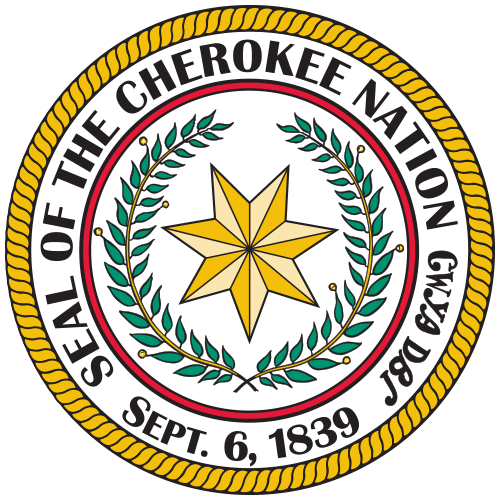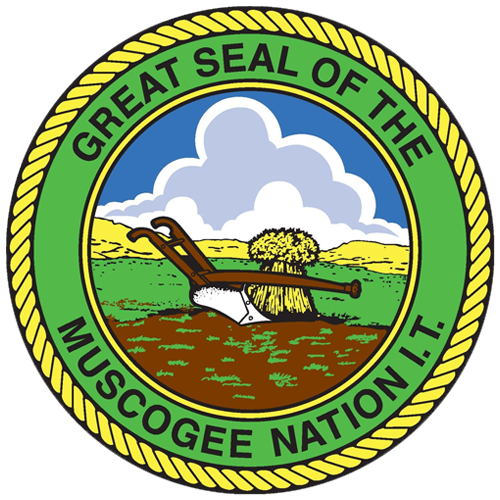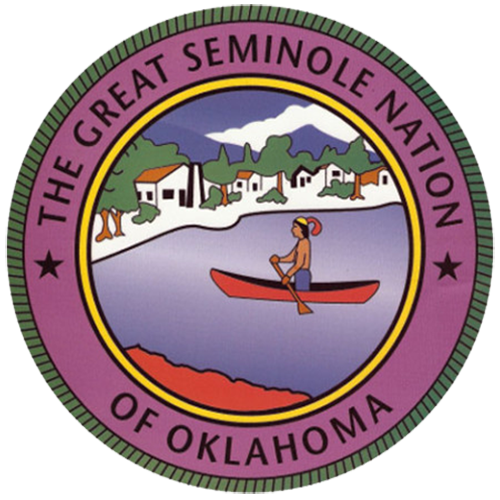




- Home
- Five Civilized Tribes
-
Council Documents
- Council Minutes
-
Resolutions
- Resolutions 1995
- Resolutions 1996
- Resolutions 1997
- Resolutions 1998
- Resolutions 1999
- Resolutions 2000
- Resolutions 2001
- Resolutions 2002
- Resolutions 2013
- Resolutions 2014
- Resolutions 2015
- Resolutions 2016
- Resolutions 2017
- Resolutions 2018
- Resolutions 2019
- Resolutions 2020
- Resolutions 2021
- Resolutions 2022
- Resolutions 2023
- Resolutions 2024
- Document Templates
Chapter Two
Chapter Two:
Section One: Education
The study by the Indian Rights Association declared that while tribes were exempt from local property taxes on Indian trust lands, the loss of monies for local schools from the nonpayment of taxes was more that compensated for by the monies expended by the tribes in Title IV Programs and Johnson O’Malley (JOM) funds. Implemented in 1971, “The Johnson O’Malley Program provided for: the hiring of guidance and counseling personnel for public schools with a high enrollment level of Indian students; the initiation of teachers for remedial curses; and way before it became state policy the funding of kindergarten programs.” Ironically, because non-Indian children also profited from the expenditure of JOM funds, auditors once claimed the tribes had “misappropriated” funds; an allegation which, in the final outcome of the controversy, was repudiated as “ridiculous” by the Department of the Interior.
As the 1970s ended, a second crucial educational issue for the ITC developed with the creation of the Department of Education. In essence, federal policymakers announced at the founding of this new bureaucracy that the Indian Education Department would be separated from the Bureau of Indian Affairs. Discussing the ITC’s opposition to such a move, Chief Hollis Roberts, Choctaw Nation, captured the Council’s mood by emphasizing, “We must sit down and figure out how we can make them respond to the needs of the Indian people.” Taking Chief Roberts’ words to heart, the ITC quickly informed their congressional representatives of their great displeasure and opposition to the proposal. This time, Washington listened and the proposed move was canceled to the benefit of Indians nationwide.
Another great victory for the ITC as the decade ended occurred over the closure of Sequoyah High School. At the turn of the century as statehood came, sixteen Indian schools still existed in Oklahoma. By the eighties, however, only five schools remained, of which four (Eufaula Dormitory, Carter Seminary, Jones Academy, and Sequoyah High School) were located within the historic lands treatied to the Five Civilized Tribes. When the 1980-1981-enrollment figure showed a decrease at Sequoyah High School, efforts were initiated by Washington to close the institution.
Over the next three years, while enrollments increased, resolution after resolution was approved by the ITC requesting that the BIA continue the operation of the high school. Principally, the memorials argued that Congress had declared it to be a policy of the United States to guarantee financial assistance for the “special educational needs of Indian children from low-income families.” The arguments, more significantly, called into national memory treaties the United States Government had signed with the Five Civilized Tribes; these documents dated back to the early 1800s with the United States promising to provide necessary education for the tribes’ youth.
The reality that the ITC’s campaign would be effective soon became apparent when the Council received a letter from Senator David L. Boren, enclosing a letter from the United States Department of Interior addressed to him, declaring: “The federal budget does not reflect the closing of Sequoyah” and “no further closure decisions will be made without full congressional approval.” In his letter, moreover, Senator Boren offered his assistance in “this or any other federal matter.”
Section Two: Water rights
As the 1970s closed, “Water rights” became a critical affair because the question involved the possible industrial development of the Five Civilized Tribes; territory in eastern Oklahoma. When the Department of Interior, the guardian of these rights for the tribes, provided in the 1980 federal budget an award of $100,000 to the State of Oklahoma for the preparation of a water plan, the ITC reacted instantly by formally resolving: “We are not saying that we are opposed t the state doing any kind of water study, but that we want to be part of the study ··· to make sure that eastern Oklahoma is adequately taken care of for the future.” Of course, the ITC’s clear intention was to secure a confirmation of assurance by the government that the rights of the Five Civilized Tribes would be properly addressed and preserved.
In truth, there was ample reason as the decade of the 1980s began for the ITC t be judicious about watching over the water rights of the tribes. This attitude resulted from the fact that the Choctaws, Chickasaws, and Cherokees were already entangled in lawsuits pertaining to the Arkansas Riverbed. In the 1960s, the three tribes had sued the State of Oklahoma over ownership of the Arkansas Riverbed that ran within their territories. After losing two lower court cases, the tribes appealed their case to the United States Supreme Court. In 1969, in a historic split decision, the tribe’s won-they owned the Arkansas Riverbed. But, no decision was made as to which tribe owned what part.
After refining the case, subsequent agreements determined that the Cherokees owned 100 percent of the bed from Three Forks to the confluence of the South Canadian River; whereas, the Choctaw and Chickasaw claims would start at the confluence of the South Canadian and run to the Arkansas border. Along the latter stretch of the river, a decision was then reached “under which the Choctaws and Chickasaws would own the south half of the thread of the stream, and the Cherokees would own the portion of the north bank running to the thread of the stream.”
As part of their decision, the court directed the BIA to order surveys of the area to properly apportion the land. Moreover, the court awarded the Cherokee Nation compensation for losses to the tribe in sand and gravel deposits removed by the U.S. Corps of Engineers in construction of the McClellan-Kerr Arkansas River Navigation Project. When the award was not paid by the 1980, nor surveys started, the ITC determined to protest its displeasure to their congressional representatives by formal resolutions demanding that the government pay its just debts. Eventually, after many conferences on strategy at ITC meetings and more court cases, the matter ended in the tribes’ favor. Still, there was the matter of the lingering surveys. On that subject, the ITC would have to continue to bring pressure to bear throughout the decade.
Section Three: Land rights
A most interesting development involving rivers and land surfaced in the 1982 October ITC meeting when Rubin White, a Choctaw delegate, related to the Council that a twenty-three year border conflict between the State of Arkansas and the Choctaw Nation might finally end with the tribe reacquiring the disputed property as a result of “getting their day in court.” The case in question stemmed from the 1830 Treaty of Dancing Rabbit, which designated the line between the Choctaw Nation and the State of Arkansas.
According to the Choctaws, the 1905 Arkansas legislature had changed the boundary line without authority from the Choctaw Nation. White had discovered this fact in 1956 while serving as County Assessor of LeFlore County. In total, the alteration of the line had given Arkansas 14 blocks of Choctaw territory that still was recorded as property in LeFlore County. During his pursuit of the case, White told the Council he had implored the help of President John F. Kennedy and Oklahoma Attorney Larry Derryberry and Jan Cartwright. Encouraged to hear that the U.S. Supreme Court had consented to hear the case, the ITC went on record as promising to follow closely subsequent developments regarding the dispute.
Another important land settlement case the ITC closely followed in the eighties concerned the Seminole Nation. Basically, the Council became involved after Chief Edwin Tanyan requested the ITC’s support regarding the judgment awarded to the Seminole Nation for lands taken from them in Florida. As in the Arkansas Riverbed case, the ITC urged congressional action be immediately taken “to finally plan and distribute the judgment awarded in Claim Dockets 73, 151, and 73A.” In a similar manner, the ITC took a prominent role in assuring that he Chickasaws and Choctaws would receive their awards resulting from the Railroad Station Grounds Suit. The case contended that “at statehood and immediately after, the federal government had taken and given Indian lands to third parties to build railroad depot stations without just compensation.” And, like the Seminole award, the ITC would find itself engrossed in a decade-long struggle to see that justice was done for the tribes.